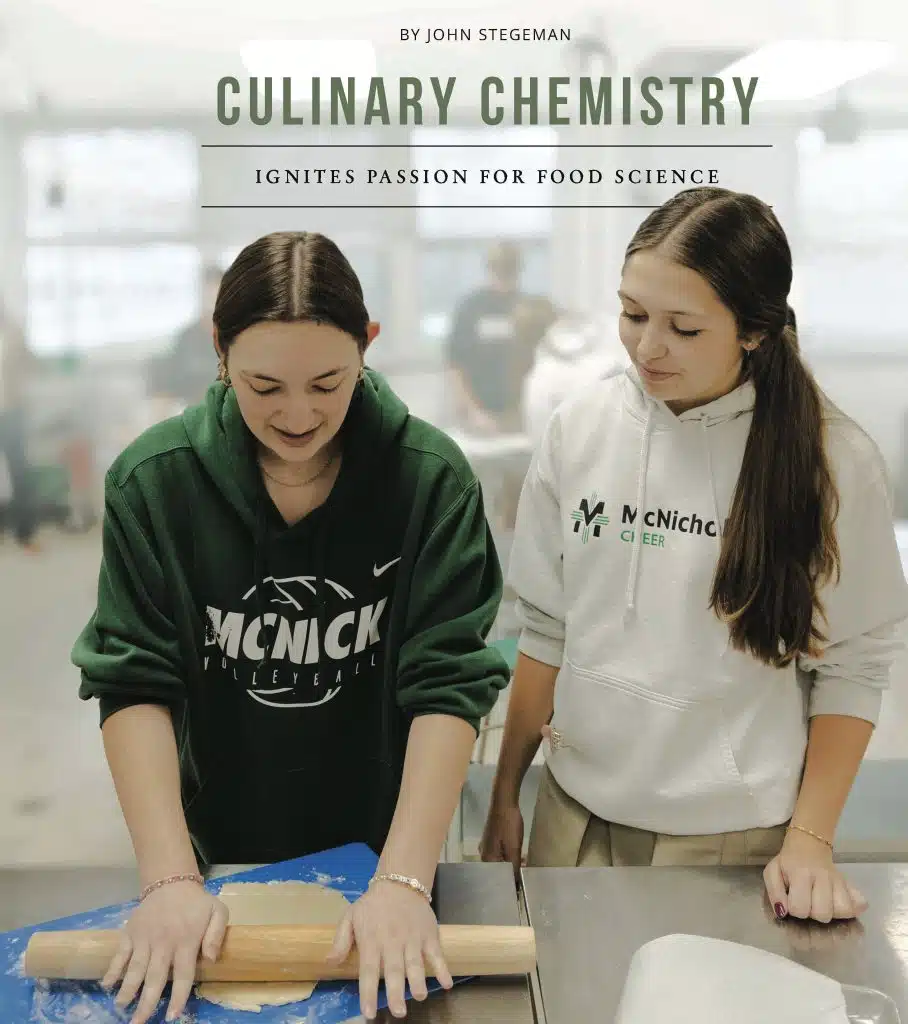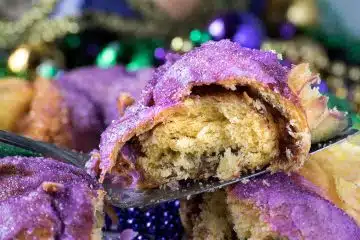Culinary Chemistry

When sitting in chemistry class, many high school students lament, “When am I ever going to use this information?” To be fair, not everyone ends up using Bunsen burners regularly. However, everyone has to eat. A new program at McNicholas High School, first offered last year, blends science and sustenance. They call it Culinary Chemistry.
The course’s success led to adding a more advanced class, Food Science, taught by Jessica Boese, a teacher at McNicholas for the past four years. She is the primary architect for both courses’ curriculum.
“I have always loved the science of food,” Boese said. “My degree is in chemistry. … I developed the curriculum alongside a lot of food science professionals and professors. Our labs are not with beakers or test tubes, they’re with food. The kids really like it.”
Though primarily a science course, students also pick up life and cooking skills. A recent class discussion included the Maillard Reaction. If you’ve enjoyed tasty bread, seared steaks, fried dumplings or even cookies, you’ve tasted the reaction’s result. In cooking terms it’s often-called browning, but Culinary Chemistry students now know it is a chemical reaction between amino acids and sugars that create a delicious taste.
Junior Ava Wile’s interest in food goes back to cooking with her grandmother. The class’s cooking element appealed to her, and she is now looking toward a career in food.
“I’m going to culinary school after I graduate,” Wile said. “I like experimenting with different ingredients and flavors, and I really like tasting the foods after [I cook them] to see what made it taste different.”
Wiles said for her favorite lab, “We made salsa, and I was showing my friend how to cut the tomato, and he was showing me how to cut an onion. We made the best salsa out of the entire class, and I took it home and my parents ate all of it! It tasted just like it came from Chipotle.”
Boese noted that students are always proud of their creations. It gives them confidence to try cooking at home as well.
Taking Food Science this year after enjoying Culinary Chemistry as a junior, senior Ellie Stafford said, “I still make things that we learned about last year. I make homemade pasta like we did in class. I think [this class] is going to help me a lot at home, because I can make my own food and don’t have to go out every night. It’s made learning science a lot more fun.”
For junior Kylie Horgan, it’s more about the science than the cooking. “I see myself majoring in psychology,” Horgan said. “I would like to know more about how taste and our senses impact how our brain receives and reacts to different foods.”
The Culinary Chemistry lab has about six kitchens worth of equipment, and the space is shared with the school’s cooking club, which Boese helps moderate. “That’s where we just get to do fun cooking things, and we don’t have to talk about the science of it, although I love talking about it.”
In Culinary Chemistry and Food Science, Boese takes her teacher role seriously but always keeps in mind McNicholas’ mission as a Catholic school.
“I want them to appreciate the science of it, because that’s first and foremost my job, but I also want them to be able to bring people together with their cooking,” Boese said. “Our ultimate goal is to bring kids to Christ and for them to ultimately be saints.”
With an appreciation of God’s gift of food and the know-how behind it, the students are that much closer to the goal.
This article appeared in the January 2024 edition of The Catholic Telegraph Magazine. For your complimentary subscription, click here.













